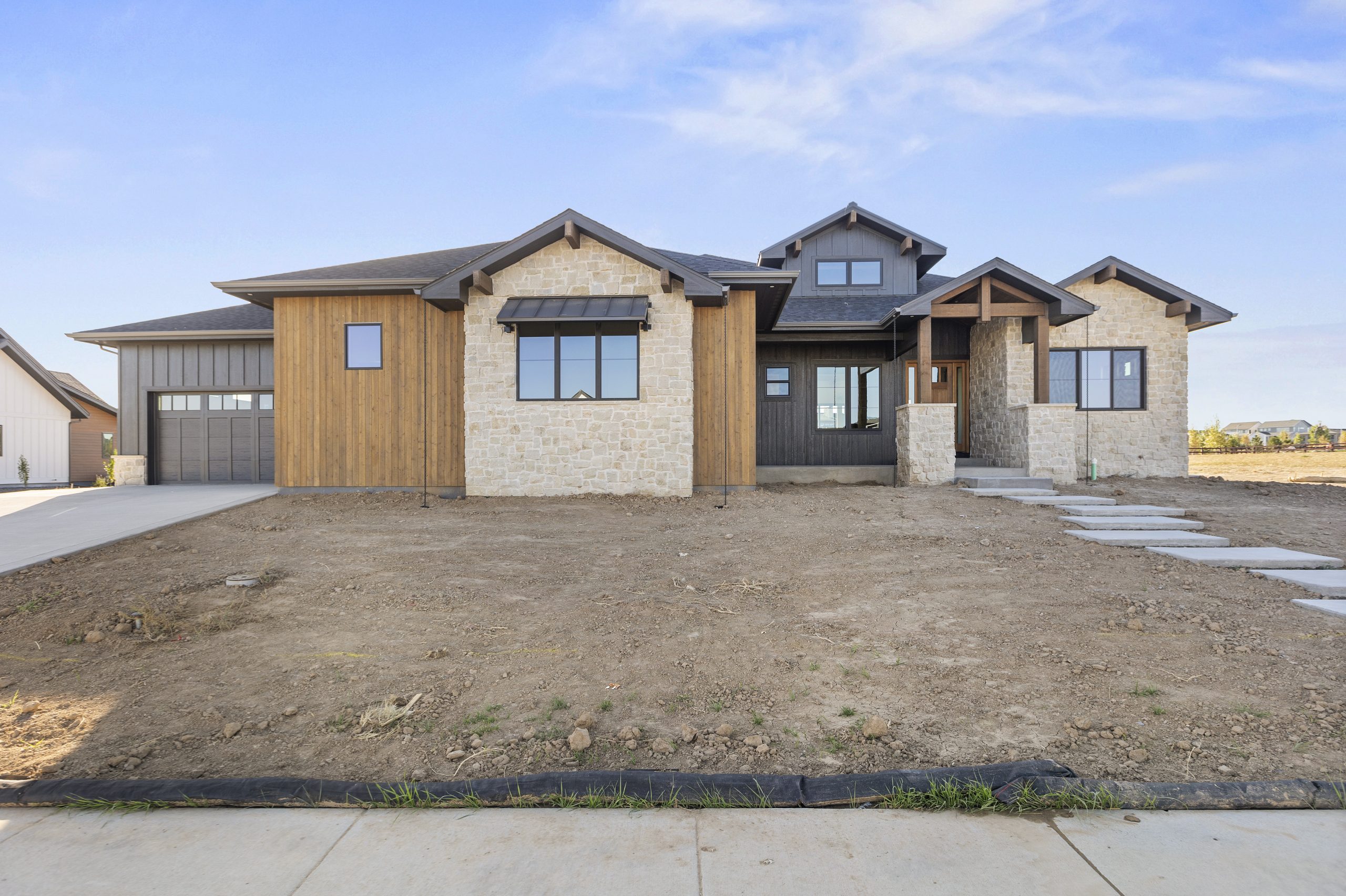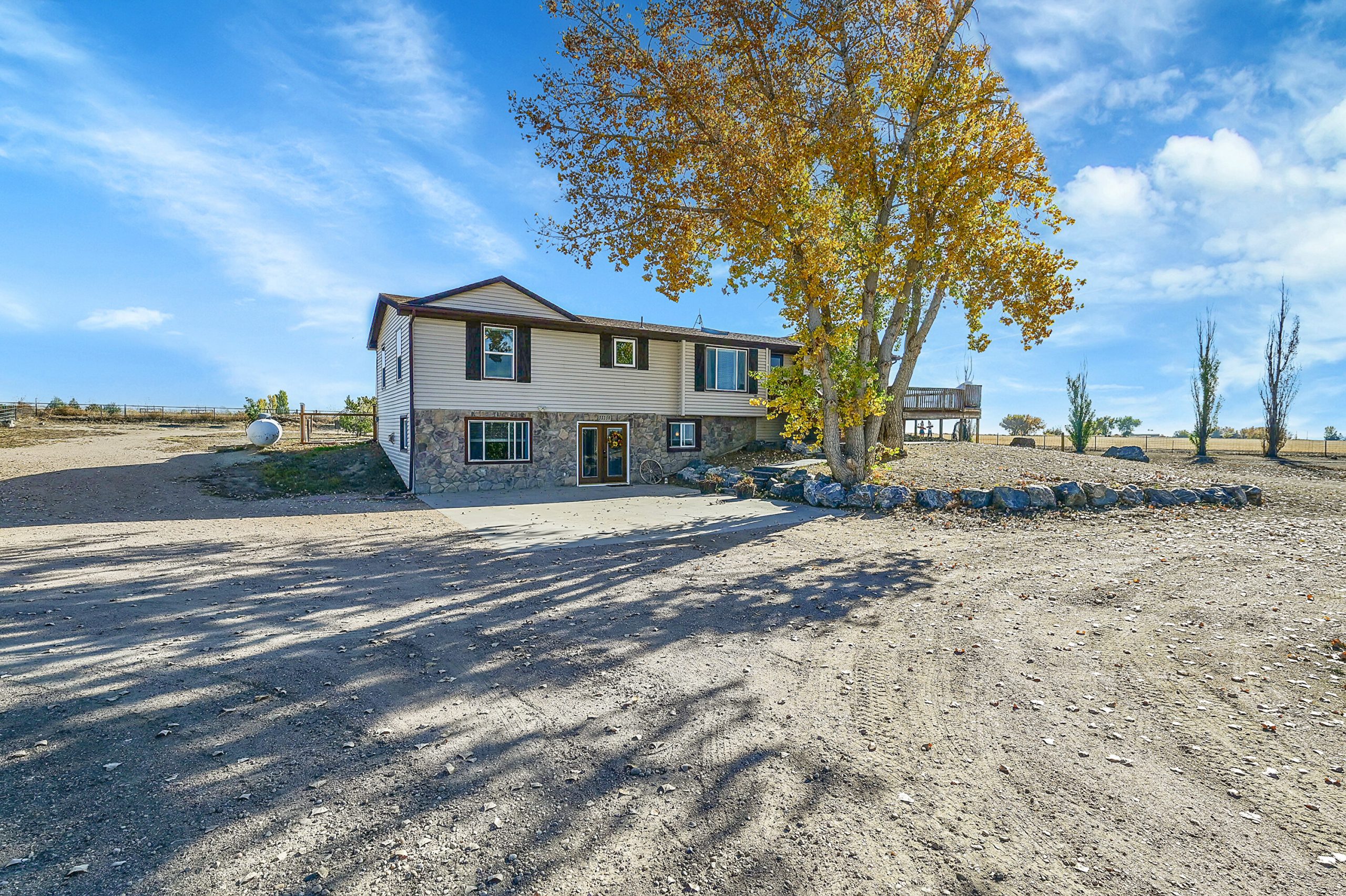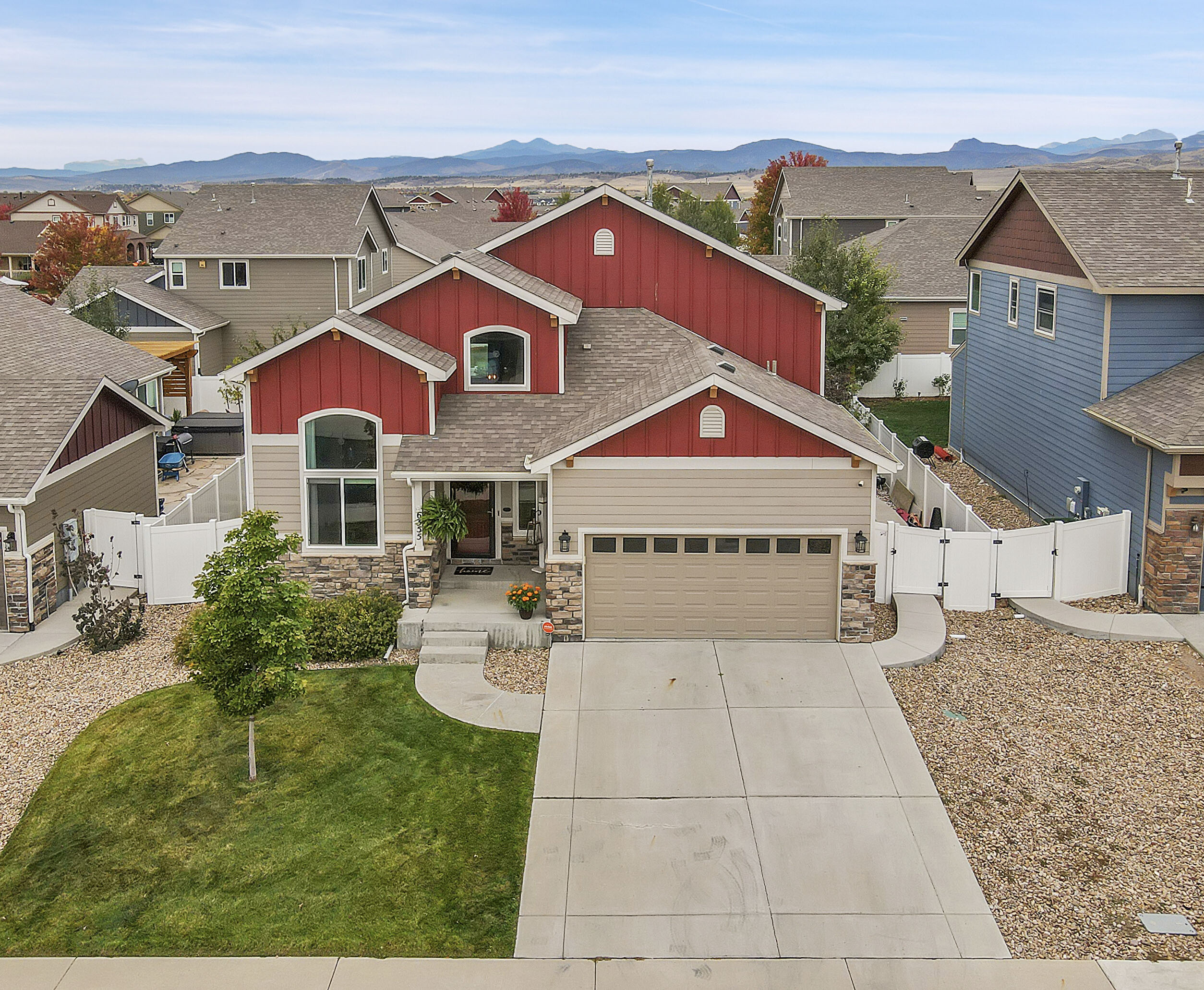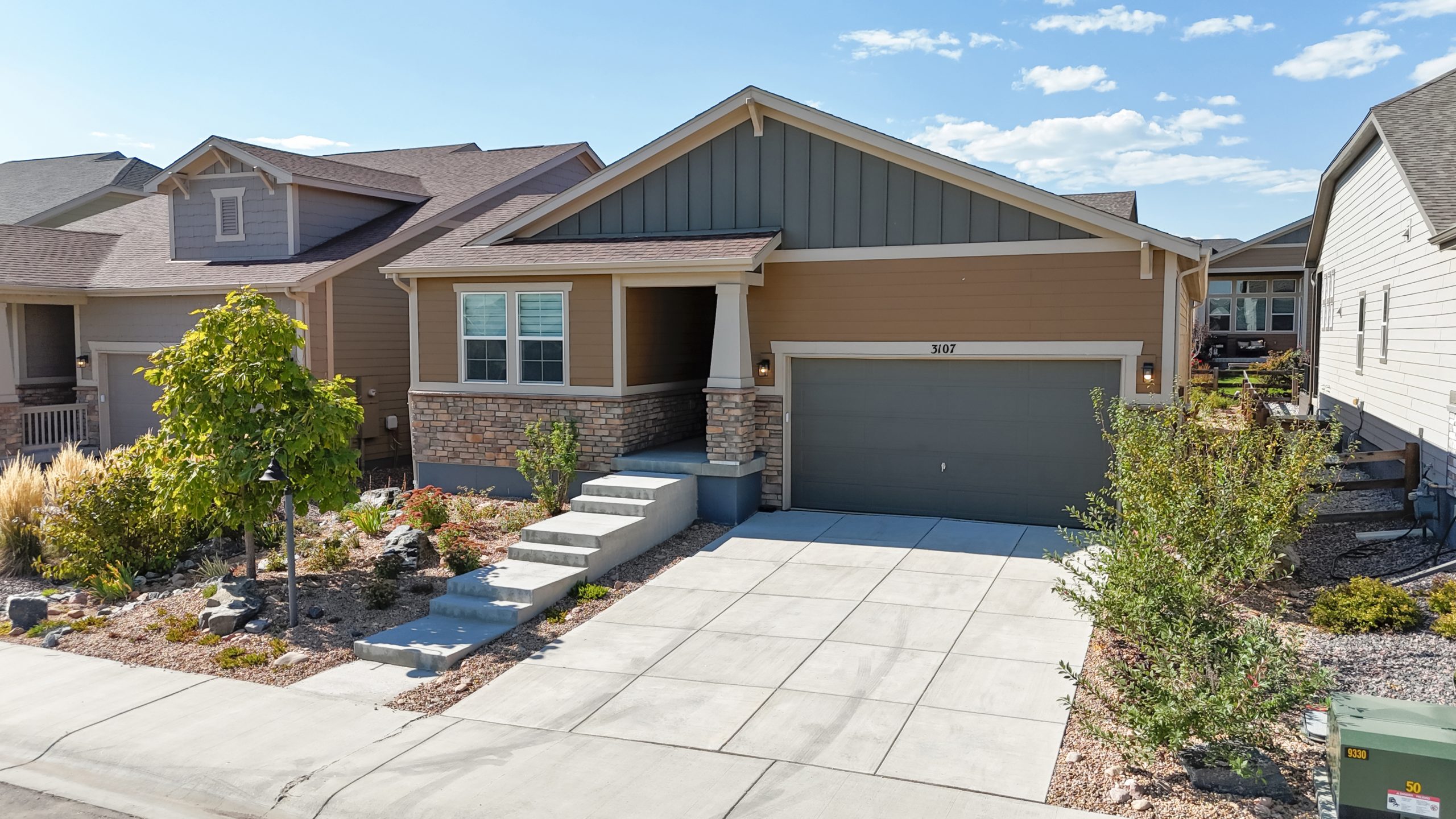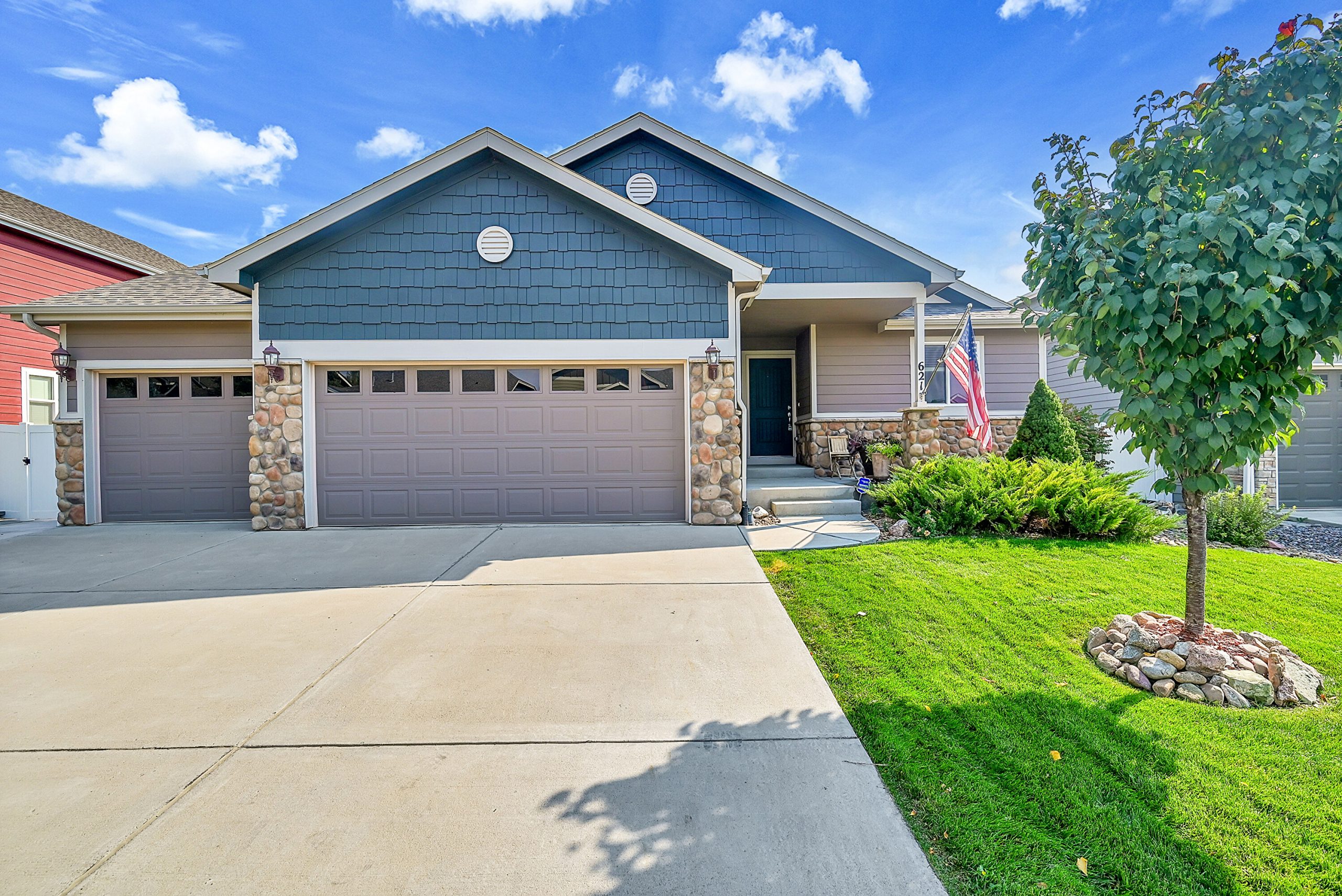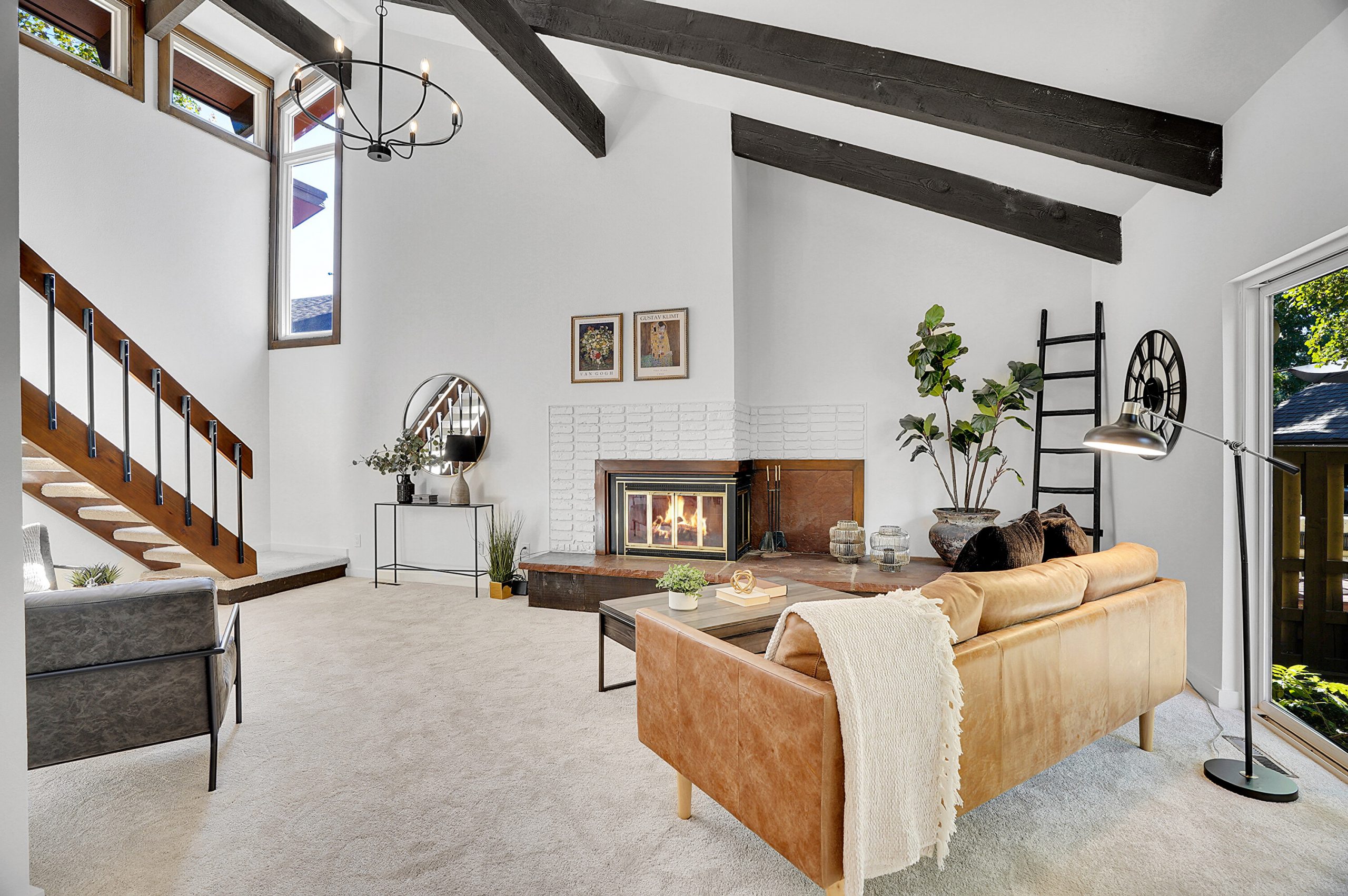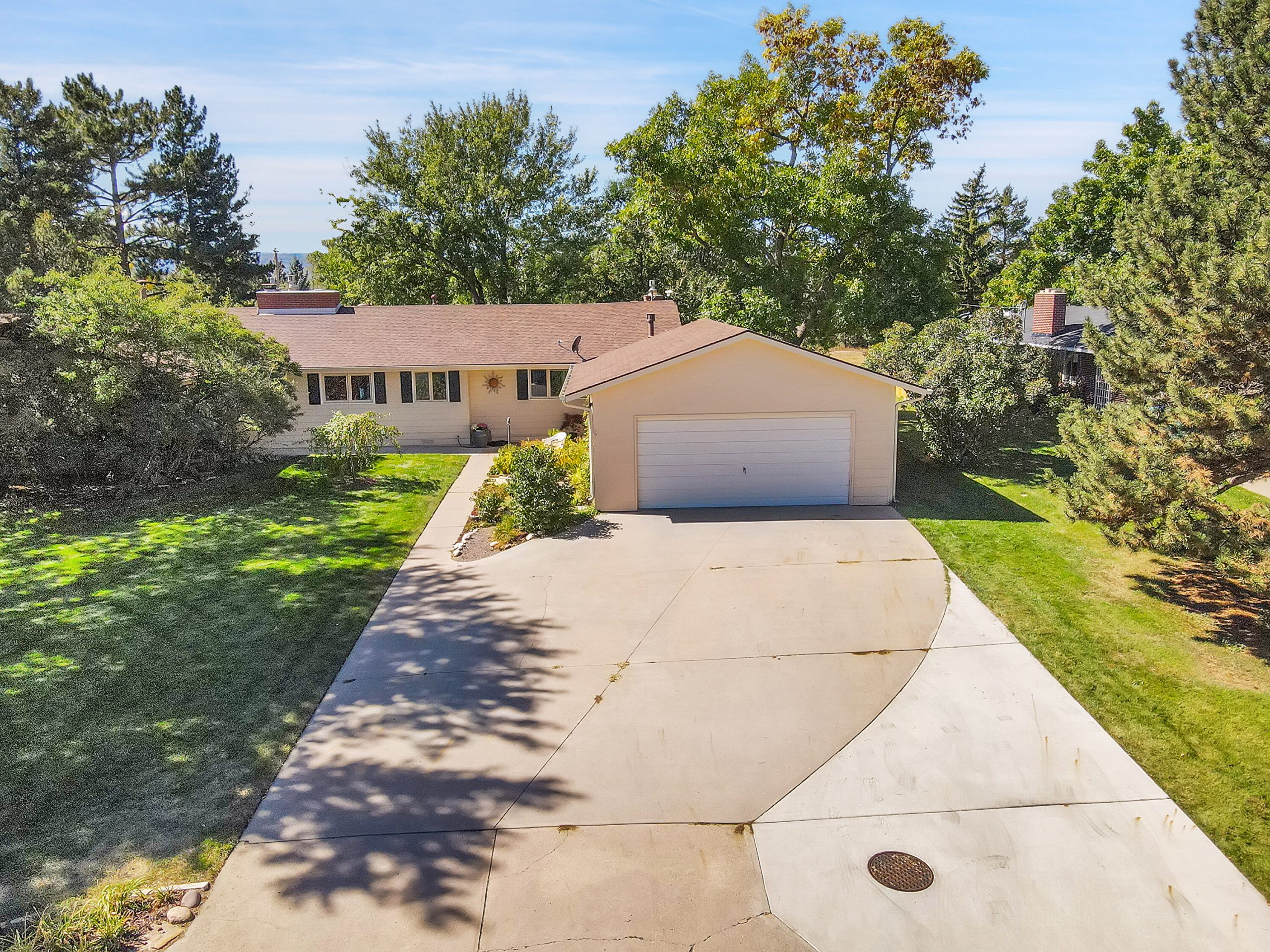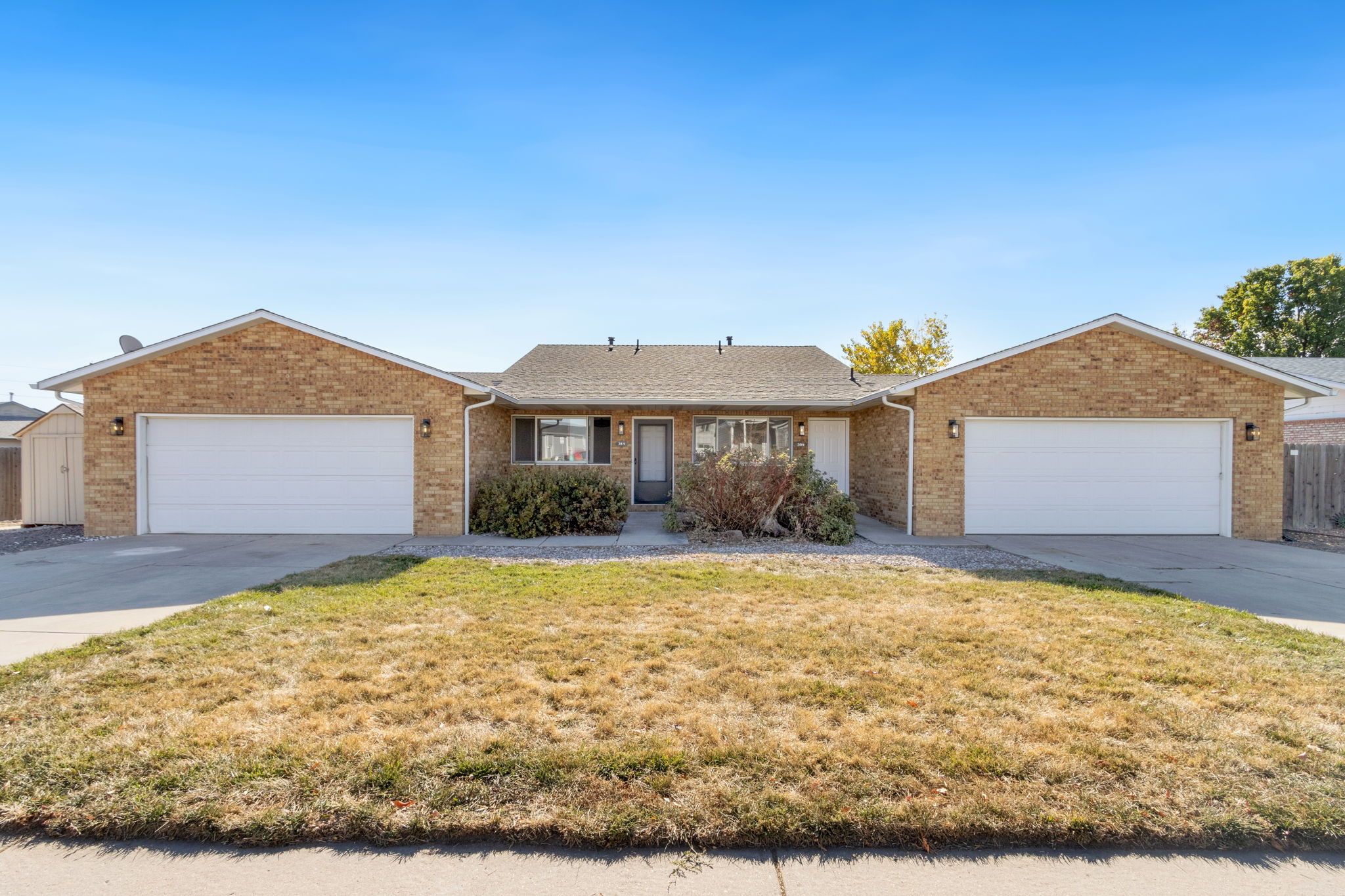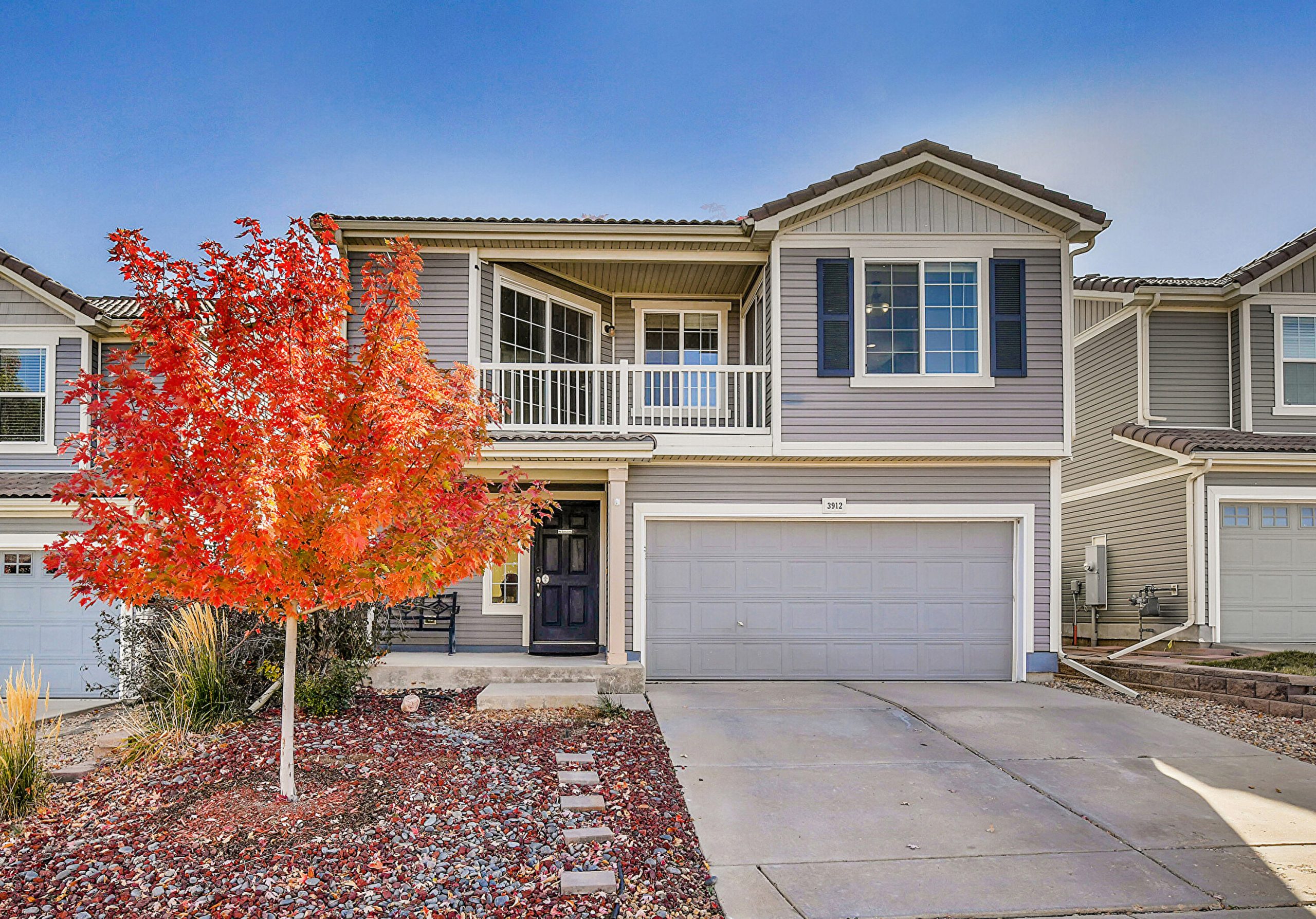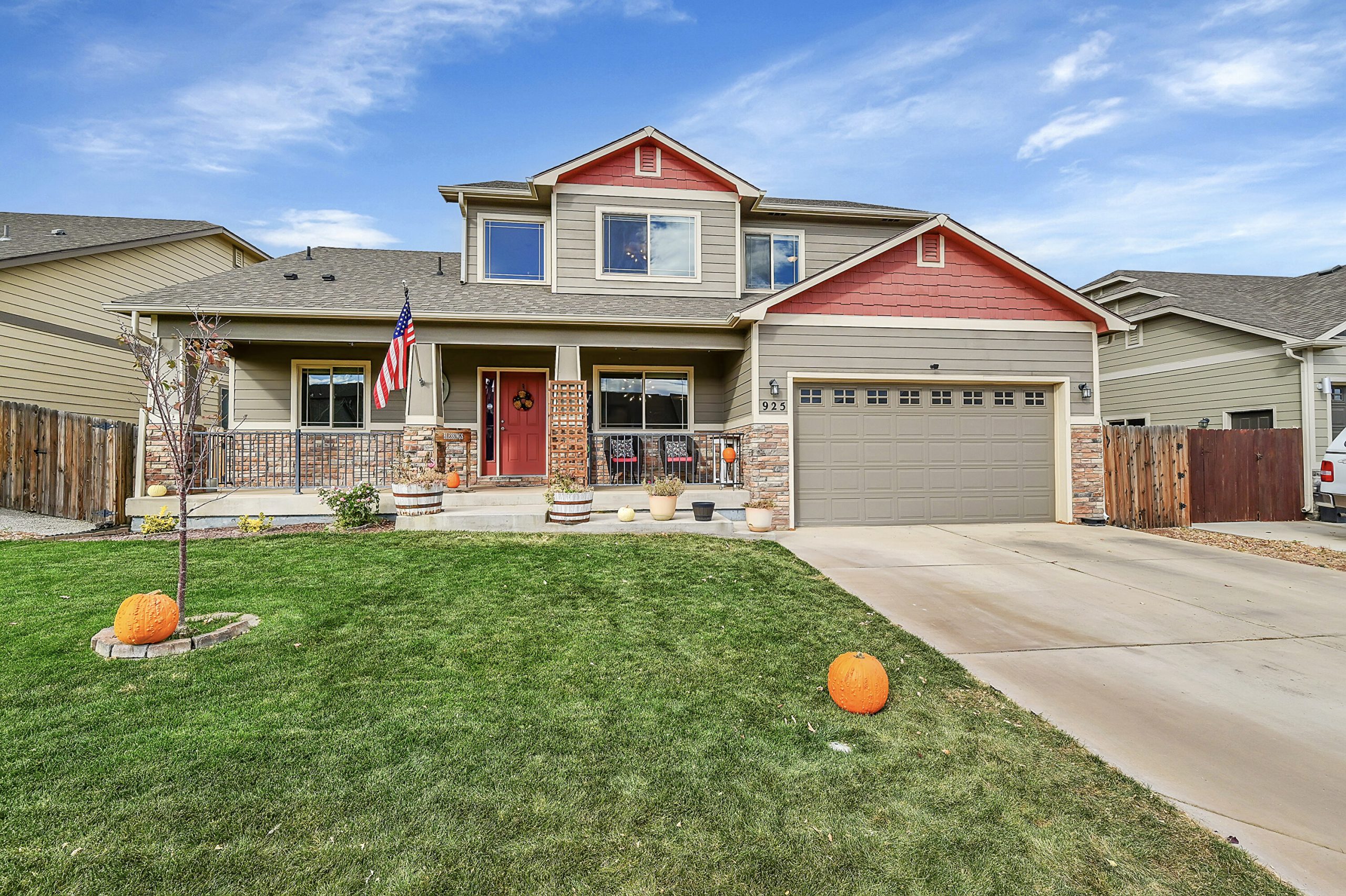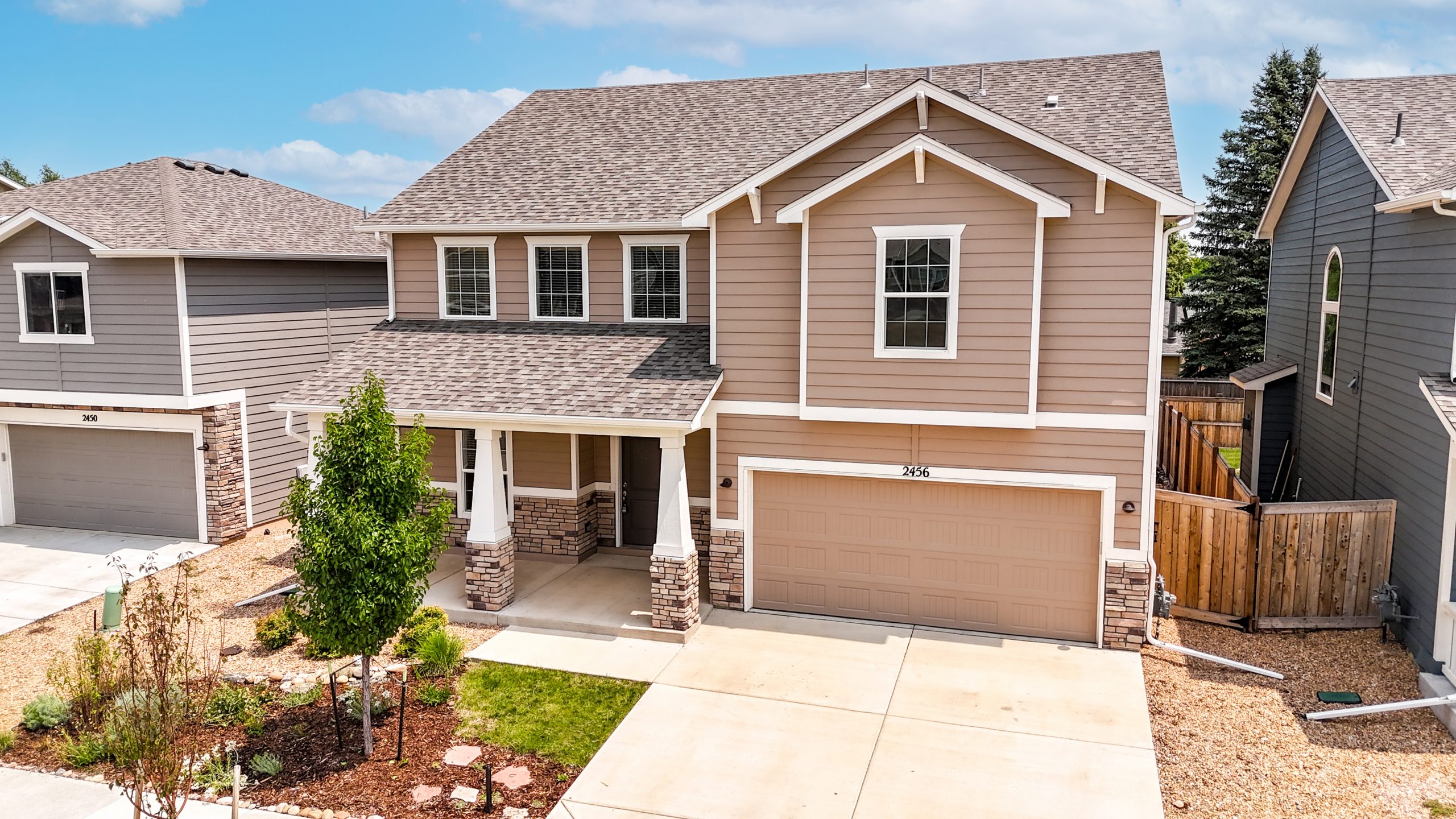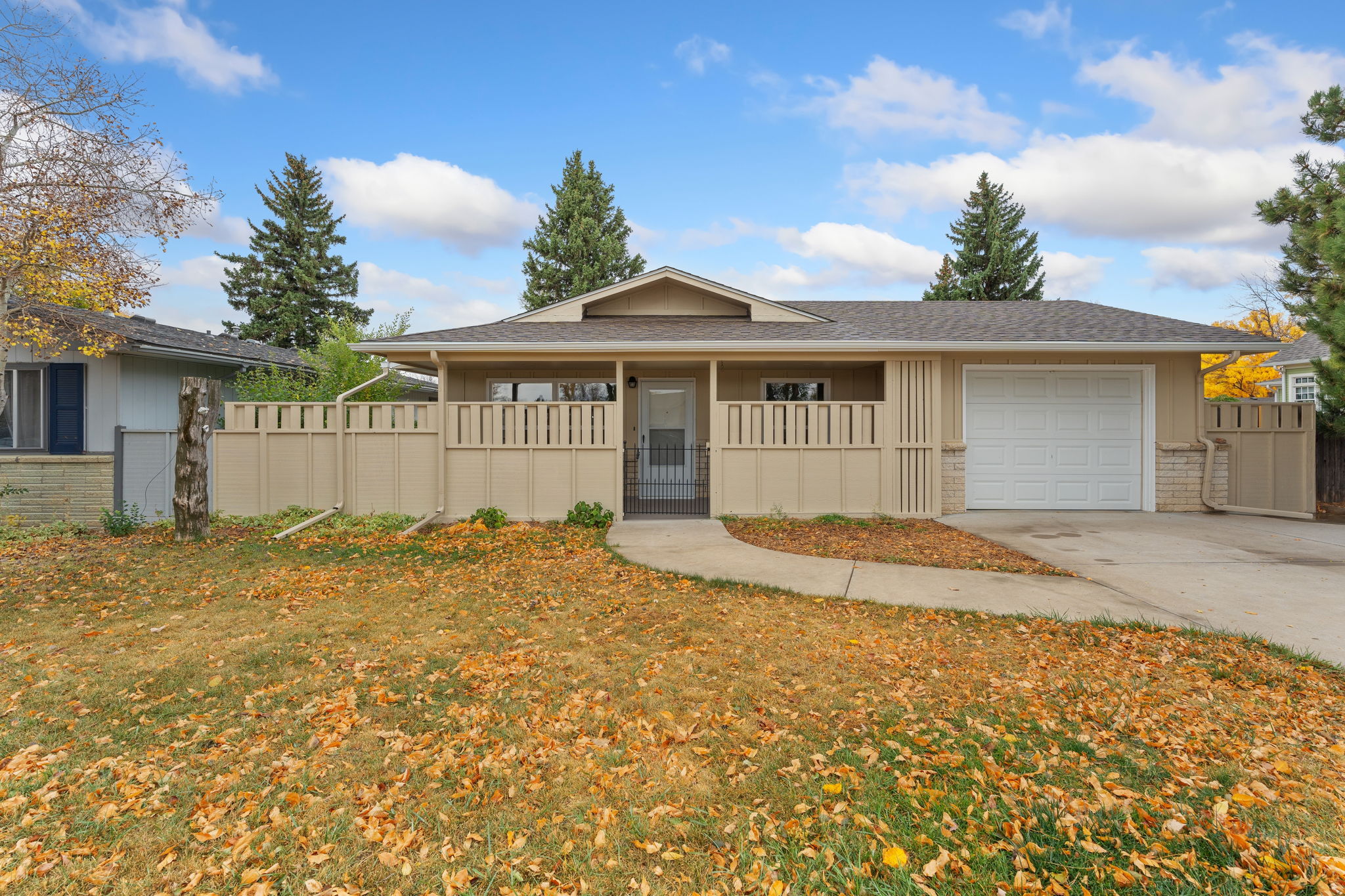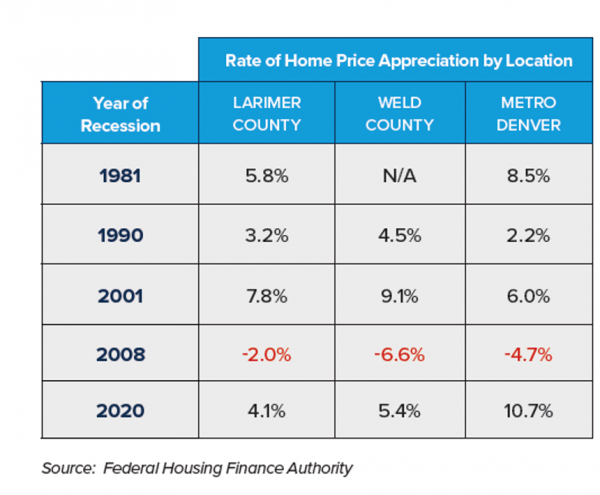1906 Spring Bloom Drive | Windsor
Welcome to an unparalleled luxury retreat, nestled on a sprawling one-acre lot in the exclusive, Acadia at RainDance. This exquisite six-bedroom, five-bathroom estate redefines opulence with its meticulously crafted features and tailored finishes. Step into the magnificent great room, where a soaring 12-foot ceiling with beams creates an expansive atmosphere, centered around a custom-designed soft-lit fireplace that serves as both a visual masterpiece and a cozy gathering spot. The adjacent gourmet kitchen is equipped with state-of-the-art Dacor appliances, walnut and white oak cabinetry with quartz slab backsplash, 11-foot island adorned with quartz slab waterfall countertop, and stand-alone column refrigerator and freezer for a total of 48 of storage. The beverage counter and separate butler’s pantry, complete with a prep sink and drawer microwave, ensures effortless entertaining. The primary suite is a sanctuary of luxury, featuring a lavish eight foot walk-through shower, a striking 60-inch freestanding tub, and an artfully crafted custom tile wall connected to an extensive master closet. The impeccably designed mudroom features two expansive white oak lockers with a black leathered granite seat, and the custom cabinetry above offers additional storage. Descend to the finished basement, an entertainer’s paradise. The bar area features two stone wall wine racks and a custom-built wood waterfall bar table, perfect for hosting gatherings. RainDance offers several orchards, pumpkins patches and a real farm-table experience all while including a stunning golf course, pool, clubhouse, and several trails.
Jacqueline Feil | MLS#1020097
33250 County Road 53 | Gill
Welcome to 33250 County Road 53 which sits in the country on 3.66 acres. This 5-bedroom, 3-bathroom homestead has so much to offer. The main floor has an open-floor plan, updated kitchen with quartz countertops, new carpet on the main level, the master bathroom has been upgraded with new finishes and a luxury shower, custom blinds throughout the entire home, fresh paint throughout, and a new storm door. The basement includes a 2nd kitchen, all new carpet and luxury plank flooring, renovated laundry room and 4 new windows. Let’s talk about the amazing views of the Rocky Mountains, lots of room for your livestock, lean-tos and a large shop ( 55X30 ) for your big toys. The property has pipe fencing all around it and as well has a fenced yard. You will not want to miss out on this gem.
Suzanne Ekeler | MLS#1021189
6355 Ozark Ave | Loveland
This meticulously maintained 2 story home features a main level primary with 2 additional bedrooms on the upper level and another 2 in the basement. There are new countertops, hardwood floors and carpeting as well as light fixtures and ceiling fans. Vaulted ceilings, big windows and a view of the foothills make this home shine. Enjoy hosting family and friends in the open concept main level or head downstairs to take advantage of a spacious recreation room. Take advantage of the fully fenced back yard, elevated garden beds and patio. Conveniently located in north Loveland this is the right place to call home.
Maria Delotta | MLS#1021095
3107 Deering Lake Drive | Loveland
Welcome to your new home in the beautiful Lakes at Centerra neighborhood!! This beautifully maintained 3-bedroom, 2-bathroom home is better than new and move-in ready. This spacious residence offers a bright and open floor plan, perfect for comfortable living and entertaining. The living room is filled with natural light, showcasing vaulted ceilings and large windows that create a warm and welcoming atmosphere. The updated kitchen features quartz countertops, stainless steel appliances, and ample cabinet space, making it a chef’s dream for everyday meals and special gatherings. The primary suite is a peaceful retreat, complete with a walk-in closet and an en-suite bathroom with dual vanities, and a large walk-in shower. The 2 additional bedrooms provide versatility for family, guests, or a home office. The outdoor space is equally inviting, with a professionally xeriscaped back yard and a large patio perfect for outdoor dining, relaxation, gardening, entertaining and enjoying Colorado’s sunny days. Don’t miss the unfinished basement! It has an additional almost 1000 square feet and is roughed for another bathroom. The home is just a short walk to one of the 2 neighborhood parks and the dog park. With a neighborhood garden, fishing at the lake, the high plains environmental center, plenty of walking trails and conveniently located to I25, and shopping at Centerra this neighborhood has something for everyone! Don’t miss out on this one!!
Karla Laferriere | MLS#1020628
621 Wind River Court | Windsor
Welcome to 621 Wind River Court, a ranch-style home located on a Cul-de-sac, offering main floor living with 4 bedrooms, 3 full baths, and a 3-car garage. The open floor plan features vaulted ceilings, natural light, and a kitchen with granite countertops, wood floors, an island, eating area and pantry. The basement includes a large family room and storage. The backyard boasts beautiful landscaping, garden boxes, and an extended patio. Solar panels are paid off, lowering utility costs. Walking distance to Hollister Lake Elementary, Windsor Lake, and downtown. Call today for your private showing.
Suzanne Ekeler | MLS#1020369
1904 Winterberry Way | Fort Collins
Nestled in the vibrant heart of mid-town, this 3-bedroom, 2-bathroom townhome offers a perfect blend of convenience and charm. Just a stone’s throw from Rolland Moore Park and a short bike ride to CSU and Old Town via the scenic Spring Creek Trail, the location is unbeatable. Surrounded by mature trees and expansive green spaces, it provides a serene setting for residents. Step inside to a newly transformed interior that enhances its original charm, featuring new carpet and fresh paint throughout. The Dining Room can be transformed to a MAIN LEVEL OFFICE or a 4th BEDROOM depending on needs. The updated kitchen boasts stainless steel appliances and solid surface countertops, making it ideal for any home chef. Enjoy the outdoors with a fenced front courtyard and a cozy back deck accessible through sliding glass doors. The two-car garage offers ample storage. With a new water heater and AC system, this townhome is ready for you to move in and make it your own.
Alexis Foster | MLS#1020178
2233 Ridgecrest Road | Fort Collins
Nestled on a serene .68-acre lot, the home offers the ease of one-level living in a beautifully designed ranch-style home. This tranquil retreat features lush gardens, a small greenhouse for gardening enthusiasts, and thoughtfully designed outdoor living spaces. Imagine mornings on the newly laid paver patio listening to the sounds of a flowing fountain, evenings gathered around the designated firepit area, and afternoons unwinding in the relaxing sunroom that brings the beauty of the outdoors in. Inside, the updated kitchen invites culinary creativity, while the family room and living room each boasts a cozy fireplace, with a smaller wall fireplace adding a touch of warmth to the primary bedroom. With four bedrooms and no HOA restrictions, this property is truly a private haven where nature and modern living harmoniously blend. Seller is also offering a One Year Home Warranty.
Rondi duPont | MLS#1019715
2502 Owens Ave 102 | Fort Collins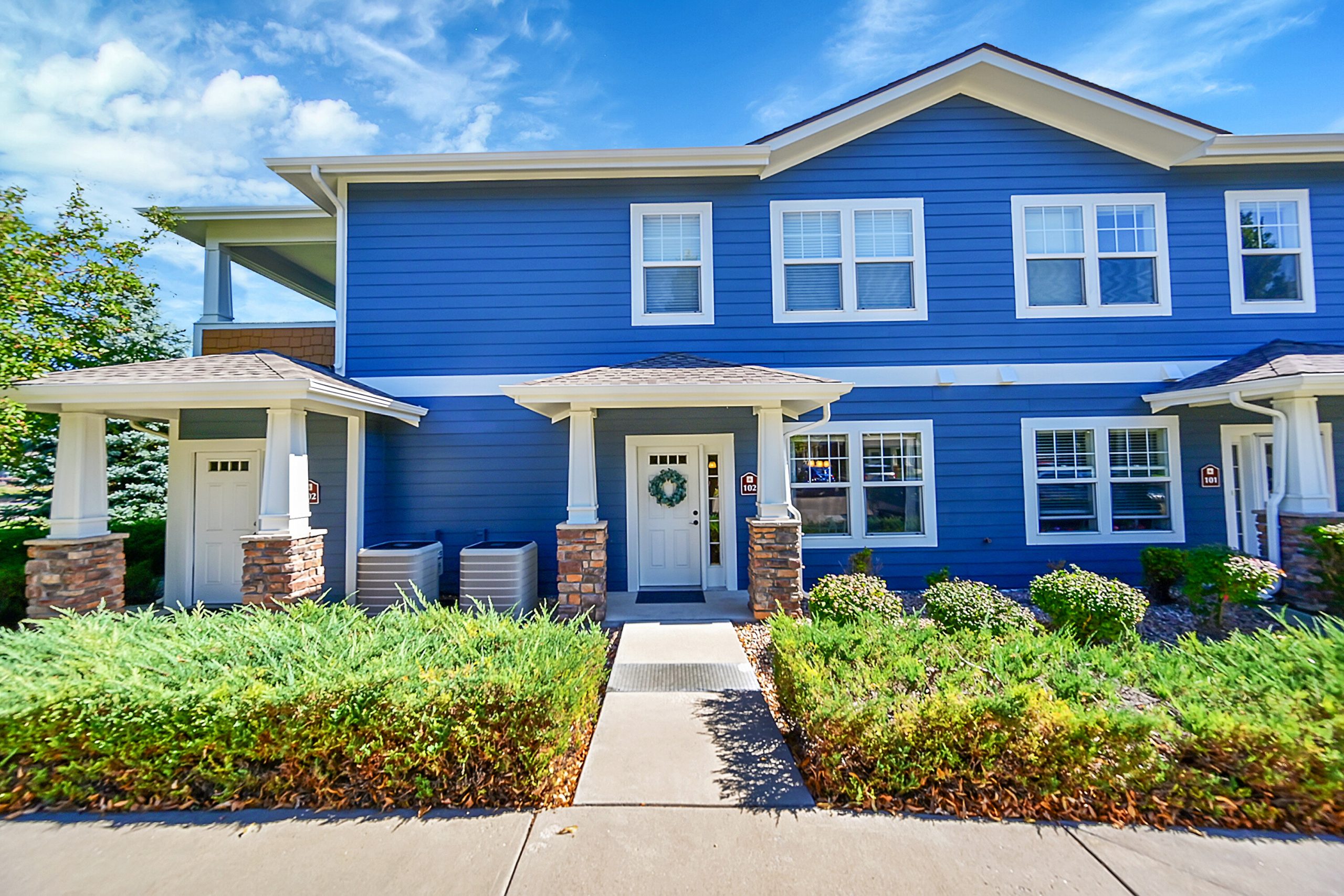
Welcome to this beautifully maintained main floor 2 bed, 2 bath condo in the highly sought-after Timbers subdivision! Featuring a bright open floor plan, a cozy fireplace, new flooring, fresh paint throughout, and a new furnace installed in 2023, this home is move-in ready. Enjoy your own private patio, perfect for relaxing or entertaining. You’ll appreciate the convenience of a detached 1-car garage and easy access to local shops, dining, and more. Located in an excellent school district, this community also offers fantastic amenities, including a clubhouse, pool, and fitness center. Don’t miss out on this gem!
Philip Cooper | MLS#1019911
8012 N Louden Crossing Court | Windsor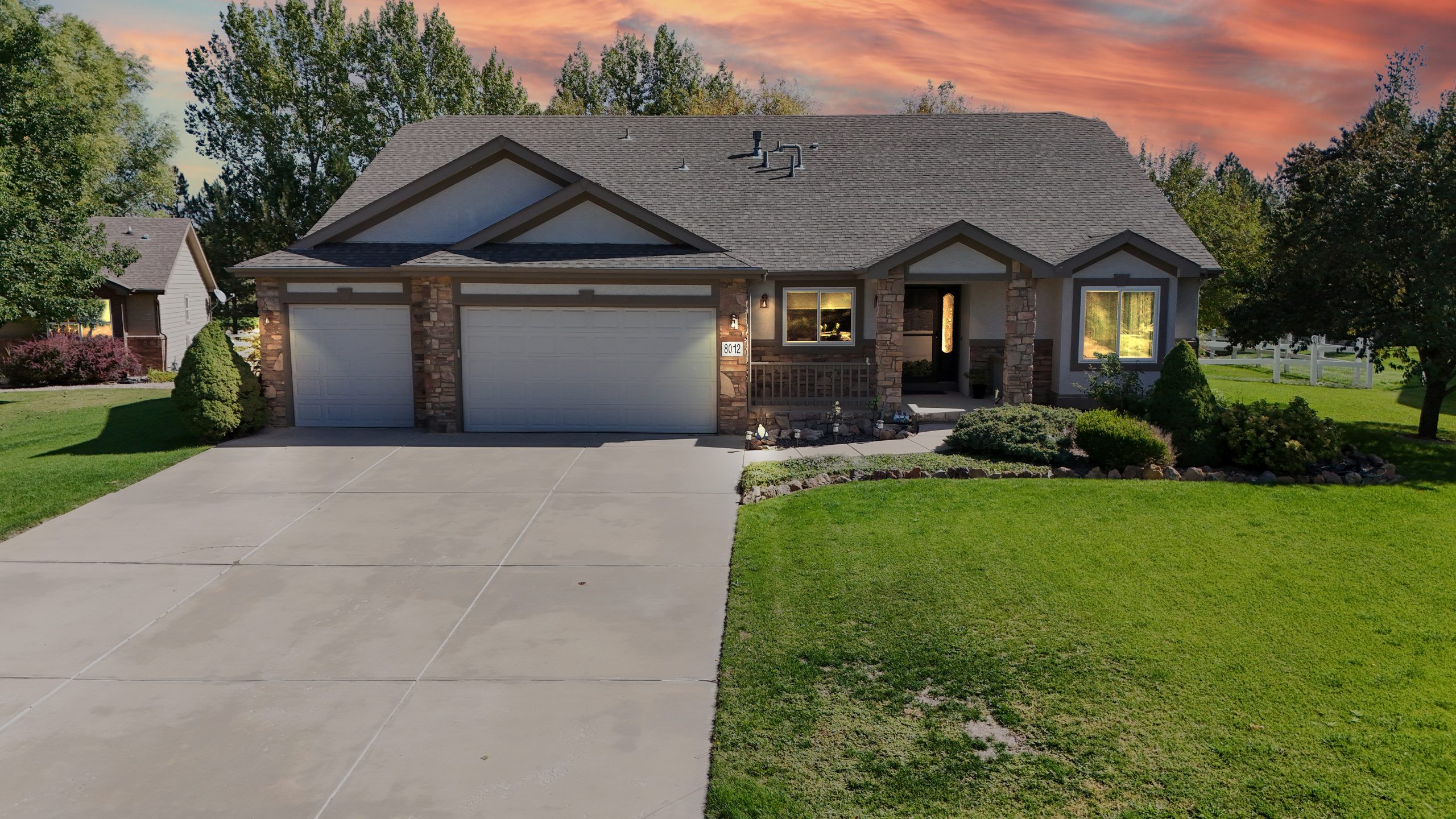
Gorgeous 1/2 acre oasis with amazing outdoor features and indoor tranquility. Don’t miss the 16 x 9 gazebo, fire pit, mature trees and a lovely patio area. Enjoy this expansive ranch-style home with an open floor plan, main level office, huge eat-in kitchen, formal dining room, large laundry room, soaring ceilings & a beautiful fireplace in the family room. But wait, there’s more! The finished basement has a wet bar, rec room to entertain in, 2 more bedrooms and a beautiful bathroom. This entire package is on a Cul-de-sac in a great location, close to Windsor, Fort Collins, Timnath & Loveland. This great opportunity won’t last & has NO Metro Tax!
Katie Robinson | MLS#1019873
5145 Corbett Dr | Fort Collins
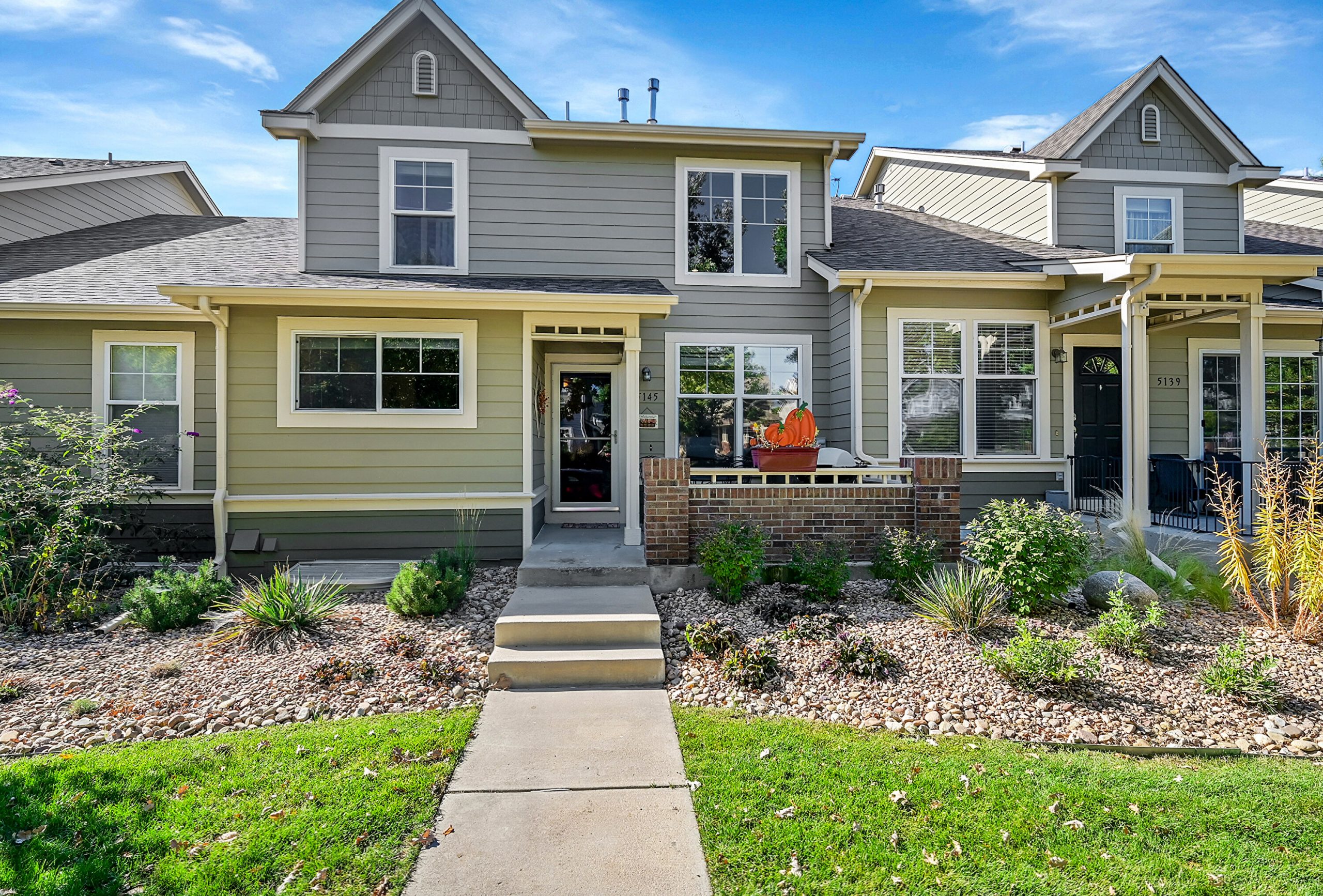 This beautiful south Fort Collins Townhome located in the highly coveted Harvest Park Community is a prime location with lots of amenities. Close to Twin Silo Park, this 2 bedroom 3 bath with an unfinished basement allows for room to grow. All kitchen appliances new as of 2020 including refrigerator, electric range/oven ( convection capable) , microwave and dishwasher. New roof, exterior paint and AC 2020. HOA fee covers access to the pool, clubhouse, weight room, water and sewer.
This beautiful south Fort Collins Townhome located in the highly coveted Harvest Park Community is a prime location with lots of amenities. Close to Twin Silo Park, this 2 bedroom 3 bath with an unfinished basement allows for room to grow. All kitchen appliances new as of 2020 including refrigerator, electric range/oven ( convection capable) , microwave and dishwasher. New roof, exterior paint and AC 2020. HOA fee covers access to the pool, clubhouse, weight room, water and sewer.
Lindsey Crisanti | MLS#1020283
311 E. Chestnut Street | Windsor
RARE opportunity to own this charming brick duplex located in the heart of Windsor. This nicely renovated property features two spacious units, each offering a comfortable living space with an open floor plan. The exterior has classic brick detailing, providing both durability and timeless appeal. Inside, each unit boasts ample windows that fill the living areas with natural light, creating a warm and inviting atmosphere. The kitchens are equipped with modern appliances, ample cabinetry, and convenient dining spaces, perfect for entertaining family and friends. Each unit includes two generously sized bedrooms, one with a full ensuite and a second full bathroom, ensuring plenty of privacy and space for residents. Each unit also has a full unfinished basement with bathroom rough in for future expansion. The duplex is situated on a well-sized lot, each unit offering a private fenced backyard that is ideal for outdoor gatherings or peaceful relaxation. Its prime location allows for easy access to local amenities, parks, and schools, making it an excellent choice for families or investors. With its blend of classic charm and modern convenience, this brick duplex in Windsor is a fantastic opportunity for anyone looking to invest in a thriving community.
Shari Moran | MLS#1021221
3912 Alcazar Drive | Castle Rock
This charming three-bedroom, three-bathroom home is nestled in the highly sought-after Meadows neighborhood, offering both comfort and convenience. It features an updated kitchen with a newer electric range and all appliances included, making it move-in ready. Inside, you’ll find brand new luxury vinyl tile (LVT) flooring throughout, adding a modern touch that’s easy to maintain. With two spacious living rooms, there’s ample space for relaxation and entertaining, accommodating a variety of needs. The Grange an expansive clubhouse just few minutes away, offers a wide array of amenities for all ages including a pool with a slide and indoor activities. Enjoy one of several parks and play areas in neighborhood only a few short blocks away. Visit www.meadowscastlerock.com to see all that the clubhouse offers.
Jacqueline Feil | MLS#1021336
925 Dove Hill Road | La Salle
Welcome to 925 Dove Hill Rd, a remarkable 3 bed, 3 bath home with 3,454 sq. ft. of spacious, elegant living. This home features an open floor plan, ideal for entertaining and everyday living, with a cozy fireplace adding warmth and ambiance. The main floor master suite offers a private, convenient retreat. Step outside to a beautiful deck where you can sit back and enjoy the breathtaking views and peace and quiet. With a 65% finished walkout basement that opens to serene open space, this home provides both tranquility and additional living potential. Don’t miss your chance to make it yours!
Philip Cooper | MLS#1021465
2456 Crown View Drive | Fort Collins
Welcome to this beautifully maintained 3-bedroom, 3-bath home that blends modern amenities with classic charm. It is located in a serene and well-established neighborhood with amazing foothills views and NO METRO TAX. Step inside to discover a bright and inviting living area, with large windows that flood the home with natural light and cozy up to the warm and inviting fireplace. The gourmet kitchen features granite countertops, stainless steel appliances, and ample cabinet space, making it perfect for cooking and entertaining. The primary suite provides a private retreat and a walk-in closet with ensuite bathroom featuring a luxurious soaking tub and separate shower. The bedrooms are generously sized and versatile, offering plenty of space. The upstairs also provides a spacious loft that has multiple uses. Enjoy outdoor living on the back patio, perfect for dining and relaxation. All your toys will fit in the 3-car tandem garage. You’ll enjoy easy access to nearby parks, walking trails, shopping, and nearby attractions including Horsetooth Reservoir, Spring Canyon Park, and CSU.
Angie Clauser | MLS#1021544
2417 W Elizabeth Street | Fort Collins
Welcome to this charming home located on West Elizabeth St. Built in 1966, this home shows true pride of ownership with numerous updates and a warm, inviting atmosphere. This home offers comfortable living spaces with 2 generous sized bedrooms, plenty of closet storage and one nicely updated bathroom. NEW roof and gutters were just installed. Customize the flex room in the primary bedroom to suit your needs….walk-in closet, quiet reading, nursery, ensuite…no limit to its potential! The yard provides a lovely space for outdoor activities, gardening, grilling, or simply enjoying the Colorado weather. Situated in a convenient location, this home offers easy access to local amenities, parks, University and the vibrant community that Fort Collins has to offer. Don’t miss the opportunity to make this delightful home yours!
Shari Moran | MLS#1021582
 Facebook
Facebook
 X
X
 Pinterest
Pinterest
 Copy Link
Copy Link

